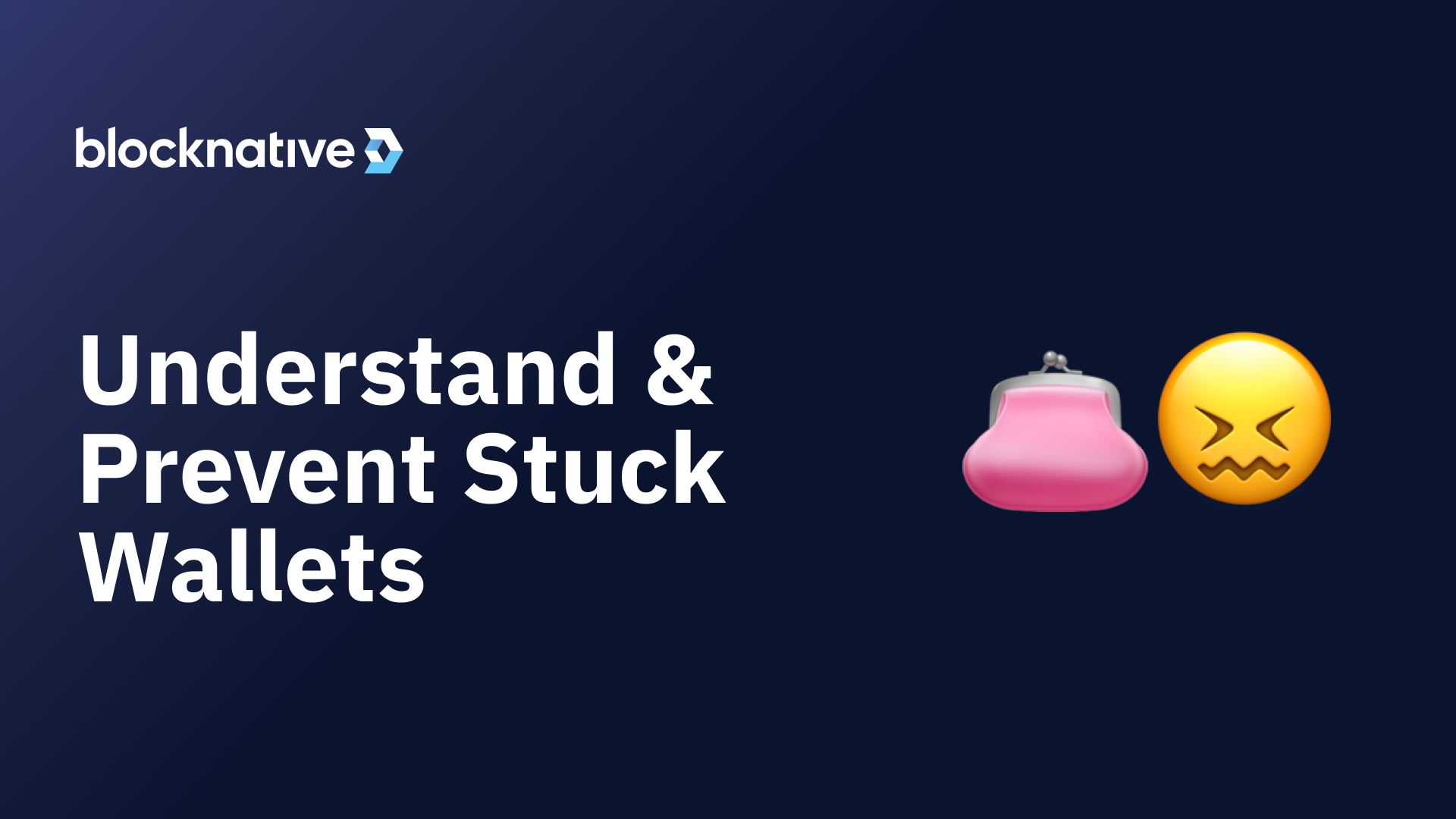Understanding Stuck Transactions
In the world of blockchain technology, transactions are the lifeblood of the system. They enable the transfer of value, the execution of smart contracts, and the overall functionality of the network. However, sometimes transactions can become "stuck," causing frustration for users and potentially clogging up the network. In this blog post, we'll take a deep dive into stuck transactions, with a particular focus on the Ethereum Virtual Machine (EVM) and the Ethereum blockchain.
This post focuses on transactions already committed to the mempool, and does not cover issues like not being able to connect to a dapp, or other pre-transaction wallet troubleshooting issues.
What is a Stuck Transaction?
A stuck transaction is a transaction that has been broadcast to the network but has not yet been included in a block by validators. These transactions remain in the mempool, which is essentially a waiting room for pending transactions. Stuck transactions can occur for various reasons, such as low gas prices, network congestion, or even smart contract bugs.
If you are interested in learning how to help prevent transaction errors we recommend you read our previous blog post here.
The Role of Gas in Stuck Transactions
To understand stuck transactions, it's essential to grasp the concept of gas in Ethereum and other EVM-based chains. Gas is a unit that measures the computational effort required to execute a transaction or smart contract. When sending a transaction, users specify a gas limit and a gas price. The gas limit defines the maximum amount of gas the user is willing to consume, while the gas price determines the fee they are willing to pay per unit of gas.
If the gas price set by the user is too low compared to the current network conditions, validators may prioritize transactions with higher gas prices, leaving the low-priced transaction stuck in the mempool. This is because validators are incentivized to include transactions that yield the highest rewards for their computational work.
Network Congestion and Stuck Transactions
Another common cause of stuck transactions is network congestion. When the Ethereum network experiences high traffic, the mempool can become overwhelmed with pending transactions. In such scenarios, transactions with lower gas prices may take longer to be included in a block, as validators prioritize those with higher fees. This congestion can lead to a backlog of stuck transactions, causing delays and frustration for users.
It's important that when you are pricing your transaction you account for the pressure in the public mempool. Using an accurate gas estimation tool that is based on real-time data and predictive modeling instead of simple heuristics can help you avoid this common mistake.
The Impact of Smart Contract Bugs
In some cases, stuck transactions can be attributed to bugs or vulnerabilities in smart contracts. If a smart contract contains errors or unintended behavior, it can cause transactions to become stuck, consuming gas without successfully completing execution. These stuck transactions can be particularly problematic, as they may require manual intervention or even result in the loss of funds if not addressed promptly.
It's important that you double and triple check the contracts you are interacting with and ensure they are properly audited by third parties. Many wallets will show you error messages when you are interacting with a smart contract that may not be properly vetted.
Dealing with Stuck Transactions
When faced with a stuck transaction, users have a few options to consider. One common approach is to wait it out. As network congestion eases and validators work through the backlog of transactions, the stuck transaction may eventually be included in a block. However, this can take a long time and is not always feasible, especially if the transaction is time-sensitive.
Another option is to replace the stuck transaction with a new one, specifying a higher gas price. By increasing the gas price, users can incentivize validators to prioritize their transaction, potentially unsticking it from the mempool. Some wallet interfaces and tools provide the functionality to easily replace or cancel stuck transactions. For details on how to do this on MetaMask follow our blog post here.
In more complex cases, such as those involving smart contract bugs, resolving stuck transactions may require the intervention of developers or the use of specialized tools. Ethereum's vibrant developer community has created various resources and techniques to assist in diagnosing and resolving stuck transactions caused by smart contract issues.
Preventing Stuck Transactions
To minimize the occurrence of stuck transactions, users can take proactive measures. One key step is to ensure that an appropriate gas price is set when sending transactions. By monitoring network conditions and adjusting the gas price accordingly, users can increase the likelihood of their transactions being included in a timely manner.
Additionally, developers deploying smart contracts should thoroughly test and audit their code to identify and rectify any potential bugs or vulnerabilities that could lead to stuck transactions. Adopting best practices in smart contract development, such as using well-audited and battle-tested libraries and patterns, can help mitigate the risk of stuck transactions caused by contract errors. As an end-user, double check the contracts you are interacting with to ensure they have been thoroughly audited.
And if you are suffering from a stuck transaction, read our guide on how to solve MetaMask Stuck transactions.
Conclusion
Stuck transactions can be a frustrating experience for users. By understanding the underlying causes, such as low gas prices, network congestion, and smart contract bugs, users can take steps to prevent and address stuck transactions. As the Ethereum ecosystem continues to evolve and scale, solutions like gas price optimization, Layer 2 scaling, and improved smart contract auditing practices will play a crucial role in minimizing the occurrence of stuck transactions and enhancing the overall user experience.
Gas Extension
Blocknative's proven & powerful Gas API is available in a browser extension to help you quickly and accurately price transactions on 20+ chains.
Download the Extension


